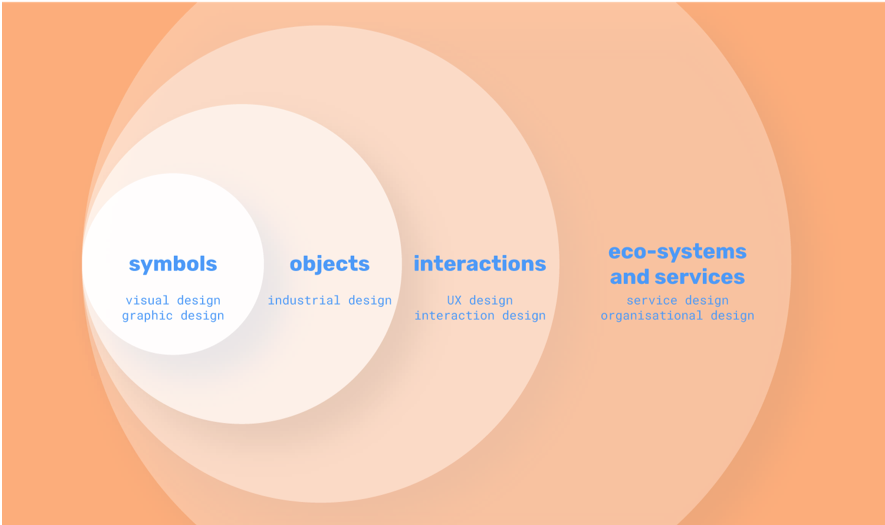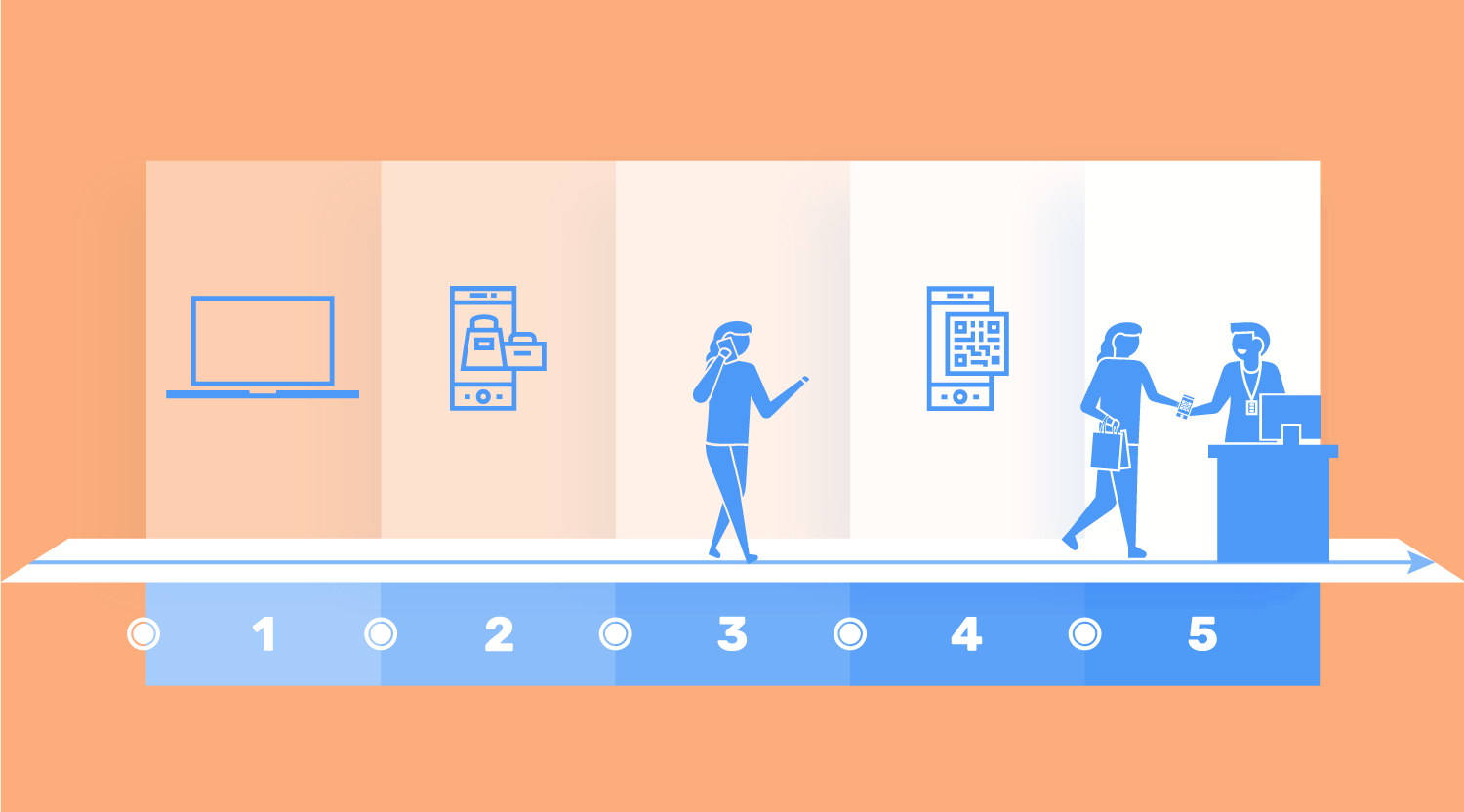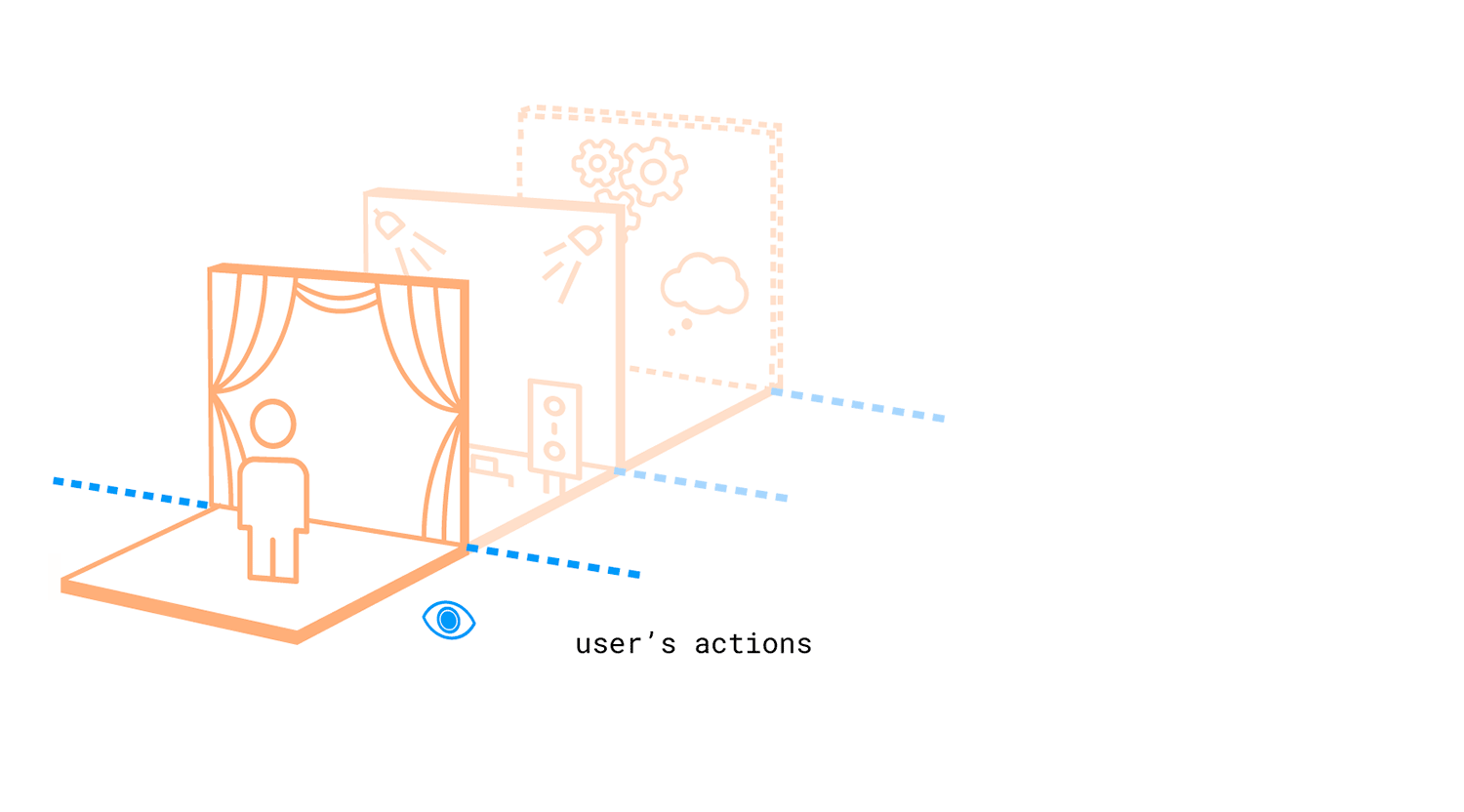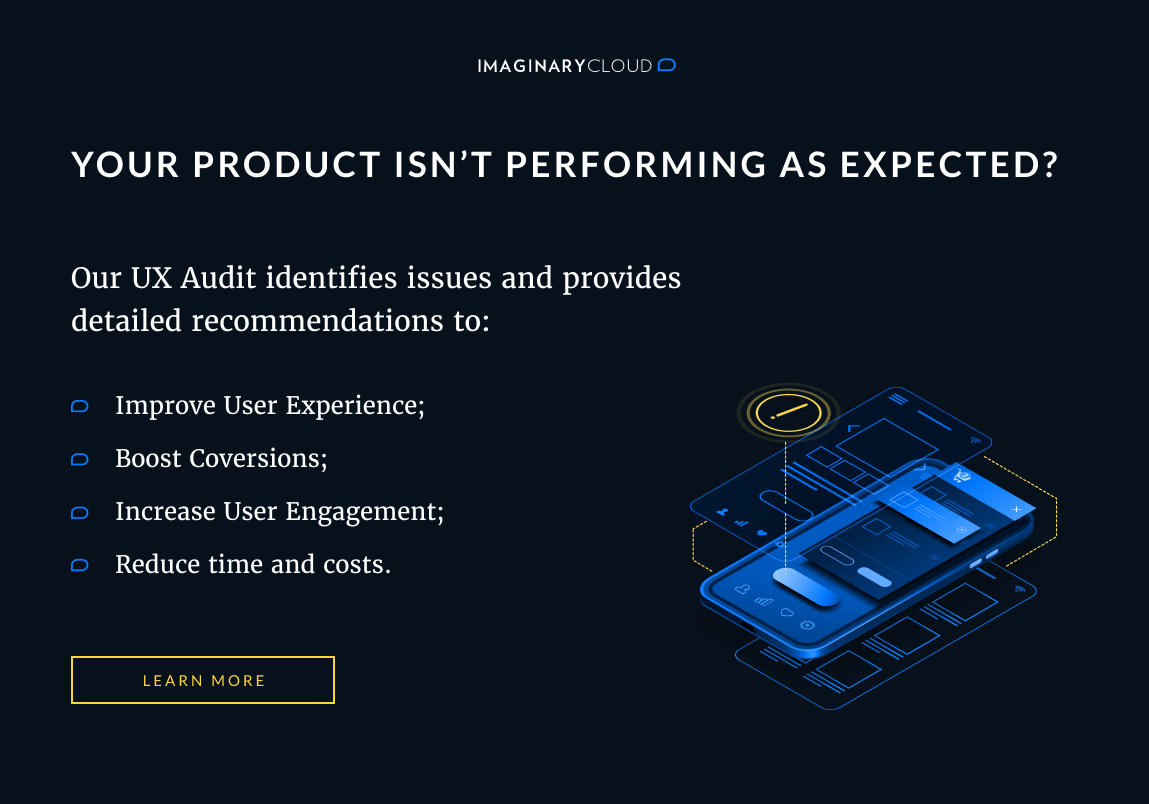Every now and then, people ask me what I do. Every designer can certainly relate, as we all struggle with that tricky question. In my case, once the answer comes up as service design, I usually get two kinds of reactions:
1. “aha, interesting” – which means that they have no clue what I’m talking about and are just trying to play along;
2. “Hmm, I see…” – they actually know what I’m talking about but look sceptical at my answer.
Even though service design is a discipline taught in several renowned universities and practised in some of the biggest design agencies in Europe, there are still many who have misconceptions about what it actually is and what its purpose is.
I would say that even among other designers working in what are considered to be traditional design disciplines, there's still an idea of service design as a small kid in a group of grown-ups. In other words, the field is still portrayed as having doubtful tenets and as trying to simply sell design as some sort of phoney business strategy.
Read along and let me show you that there’s much more value beyond that first sight.
Telling service design apart from UX design
Before even starting to define what service design is, it's important to tell it apart from other similar fields. Given its constant growth and innovation, there are many practitioners and titles gravitating around service design.
The panoply of titles is an undeniable reality as you can name, for instance, service designers, design strategists, innovation consultants, and even UX designers. What I advise you to do is to focus on their common ground – the user and the experience – rather than on the title.

Hannah Steele, a Scottish senior service designer at Spotless, has been focusing her work on customer experiences through service innovation. She puts it simply by separating the different design disciplines, so we can better understand the relation between them all. Here we see service design working on a system level, with an overview of the different products, processes and touch points of the whole service. In contrast, UX design focuses on individual touch points within a service.
In order to put it in context, imagine the following example:
1. You want to go to the theatre, so you search for the different plays that are being performed on your local theatre's website;
2. You purchase the tickets on your mobile phone through the theatre’s app;
3. A question regarding your seat comes up, so you decide to directly call the theatre;
4. Your question is answered so you download the tickets to have them ready for that night’s play;
5. You arrive at the theatre and your ticket is scanned so that you can enter.

This is just an example of a customer journey that we, as users, go through in our everyday life. In this journey, service design takes action from the first touch point (1) and until the last one (5). The whole journey is designed to be as smooth, efficient and user-friendly as possible.
In this journey, UX design regards only a specific touch point. It can be, for instance, the app to buy the tickets (2). In other words, UX is responsible for designing the experience of a product, from the acquisition to its integration and usability.
Alright, but where do one field end and the other start? Well, the truth is that there are a few blurred and overlapping areas.
The main idea to retain here and the easiest way to understand the difference between both is by imagining service design as an eagle, overviewing the whole ecosystem, aware of its community and environment. While UX design is like a gardener that takes care of a single tree, from the top to the roots and close surroundings.
What is service design?
Service design is, as the Service Design Network puts it, "to choreograph the processes, technologies and interactions driving the delivery of services, using a human-centred perspective (...) today it is applicable across multiple sectors".
Putting it simply, it's about working across fields, managing relationships with the user, other stakeholders, and other entities such as budgets, rules and policies. I always like to imagine it as a theatre stage, where everything is put together to make the play happen: the audience, the actors, the backstage work and ultimately the organisation that supports everything else.

In service design we usually divide these different perspectives in 3 main stages, as illustrated above:
1. The front stage – here is where the user’s actions happen, usually between the service provider and client. It’s often called the visible area, since it’s the part of the service where the audience can see what’s happening;
2. The backstage – where the support and the organization of everything are done to make the front stage happen. At this moment we enter the invisible area, since it’s no longer accessible to the user;
3. Behind the scenes – lastly, all the intangible elements (regulations, policies, budgets) that the organisation does to make both the front and back stages possible. As in the backstage, this area is also considered to be invisible.
To work in such high level of management and organisation requires a great load of skills that include playing the facilitator role in continuous collaboration with a multidisciplinary team.
We can find its definition as:
Someone who helps a person or organization do something more easily or find the answer to a problem, by discussing things and suggesting ways of doing things."
Cambridge.org, 2019
In this context, a service designer can sometimes be seen as a facilitator: as someone that can put into practice the design thinking process in an organisation; engage with the users but also with the business owners; translate insights to the rest of the design team.
In summary, we can say that a design facilitator is someone that helps to share the design principles and culture throughout a company, promoting innovation and change.
Service design in the private sector
When it comes to the role service design plays within an institution this shouldn’t be seen with suspicion but rather open-mindedness. Design can speed processes up through prototyping methods, breaking down silos within a company for better communication and collaboration between departments, and even bringing true value for the user.
Tiina Toivola, design and strategy specialist, currently working as Senior Advisor at Aalto University, argues that "advanced design companies are better at observing weak signals, spotting trends and seizing the possibilities of disruption", which from a business perspective can be translated into a better service and profitability (take a look into Toivola’s input to know more about service design direct relationship to profitability).
Service design in the public sector
The benefits service design can bring to an entity go beyond the private sector. It is also able to create positive changes in the public sector. Imagine if those bureaucratic red tape processes, like changing your tax residence; filling in great amounts of paperwork to sign up for a service; or even having multiple people approving a refund you should have received months ago, could be fixed. That would be great, right?
By innovating in its strategies through service design, public services can also create a solution for several problems. It consists of a low investment, yet with high impact on the user experience.
The many other challenges of service design
At last, let’s not forget that innovation – this great buzz word – does not only apply on a business level, but also on a social one. In fact, social innovation is considered to be a way to face current and future challenges, by meeting social needs and creating new social relations.
Design and innovation are being used as a tool and process for change in order to "develop (..) services, systems and environments supporting more sustainable lifestyles and consumption habits." (Routledge Handbook of Participatory Design)
During the past decade, a bit throughout EU and North America, it has been possible to see an increase of these practices: encouraging the participation of all relevant stakeholders, being one of the ultimately goals to design more inclusive cities.
How did we get here: a glimpse of history
In fact, service design practice hasn't always looked like this. As it happens in many other fields, it expanded across several iterations and inputs from other areas.
In 1982, Lynn Shostack coined the term while working as a marketing manager and consultant for the bank industry. During this decade, social scientists entered the design realm, building the bridge between designers and customers. In other words, they translated the customers' needs for designers.
The common practice at the time was to design for people, using the term customer or consumer to best describe the people a product or service was being designed for.
It was not until the 1990’s that service design became a proper discipline of study. First by being taught at a university level (first unveiled at Köln International School of Design) and then influenced by IDEO, a multidisciplinary design firm, renowned for their work in design thinking and subsequent tools and methodologies. Over the next years, there was a growing interest and progress in the field.
Convivial Toolbox, published by Liz Anders, is still today considered a key milestone for service design. It focuses on the importance of bringing all the stakeholders to the design process, with the aim of creating more human-centred products, services and systems.
Notice how we’ve seen the approach going from designing for people, to designing with people and more recently by people; and similarly we’ve seen the term consumer or customer evolving to user and more lately to human, as in human-centred design.
Moreover, since the 2000s until today, there was an integration of design in the whole process, from research to implementation, with an overview of the whole ecosystem. As a matter of fact, designers started to be called not only regarding how to design but also what to design.
A good example of the involvement of designers in the public sector is innovation labs, where it’s possible “to co-create public sector solutions with citizens, businesses and government agencies. (…) it enabled a new medium through which public sector stakeholders could reimagine problems and opportunities” (MindLab, 2016)
One of the most important ideas to get from this example is that service design can be the catalyst for innovation not only on a business level but also on a politic and social level.
During the past decade, service design has spread out, from the private sector to the public. Also, a more solid academic community of several universities created the Service Design Network (2004) and later on a Service Design Day (2016) with the aim of creating awareness for those who don’t know of the field.
Design is good for everyone
Back to where we started, do you still see service design as a mere design trend, phoney business strategy or unclear field? I honestly hope not, but don’t hesitate in writing to me or leaving a comment if you have any questions.
In summary, as it happens in any other field there are good and bad examples. So, if you’re either a CEO trying to understand the best way to face future challenges or a student starting design school, try to learn and understand the field before anything else.
In an interview by Katharine Schwab, Michael Hendrix, IDEO partner and leader, says that "part of the problem is that many people use the design thinking methodology in superficial ways. (…) Companies know they need to be more creative and innovative, and because they’re looking for fast ways to achieve those goals, they cut corners."
Besides the fuzz around the field, service design can, indeed, create better conditions for more engagement, benefiting businesses and society in the long-run. Plus, don’t fear innovation – we live in a fast-paced world that needs new solutions and new methods. We might not fully master them yet, but only by failing and improving we can actually progress.
In the future, we’re expecting to see more designers facing wicked problems that can more efficiently be solved when designed by people.
If you’re interested in reading more about the topic here are my suggestions:
What about the design facilitator?
- More about the role of a design facilitator with actual case studies examples.
The value of design to business
- Know more about design as a key-factor to business strategy, and how it translates into profitability (with statistics that prove it).
Found this article useful? You might like these ones too!


